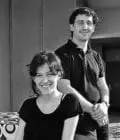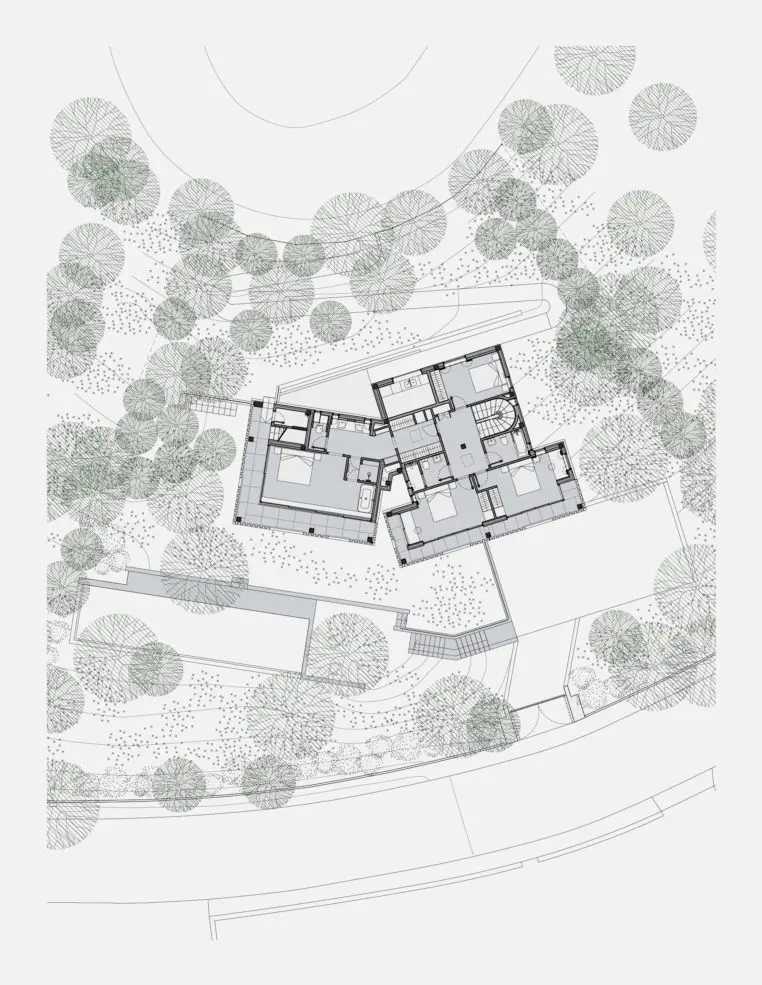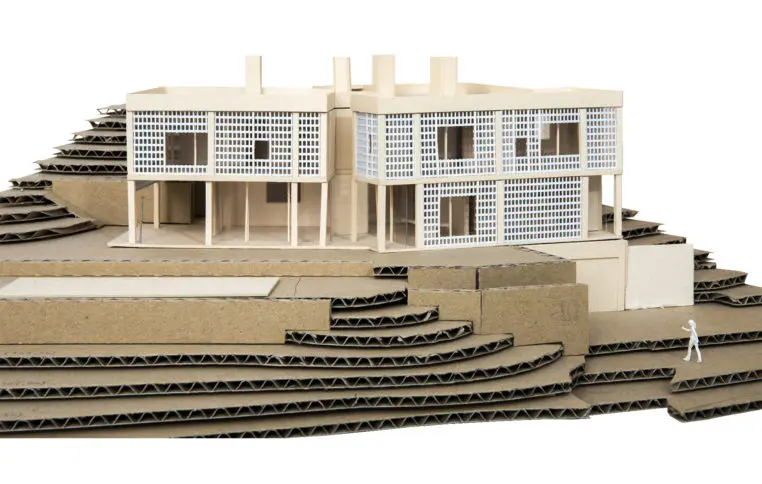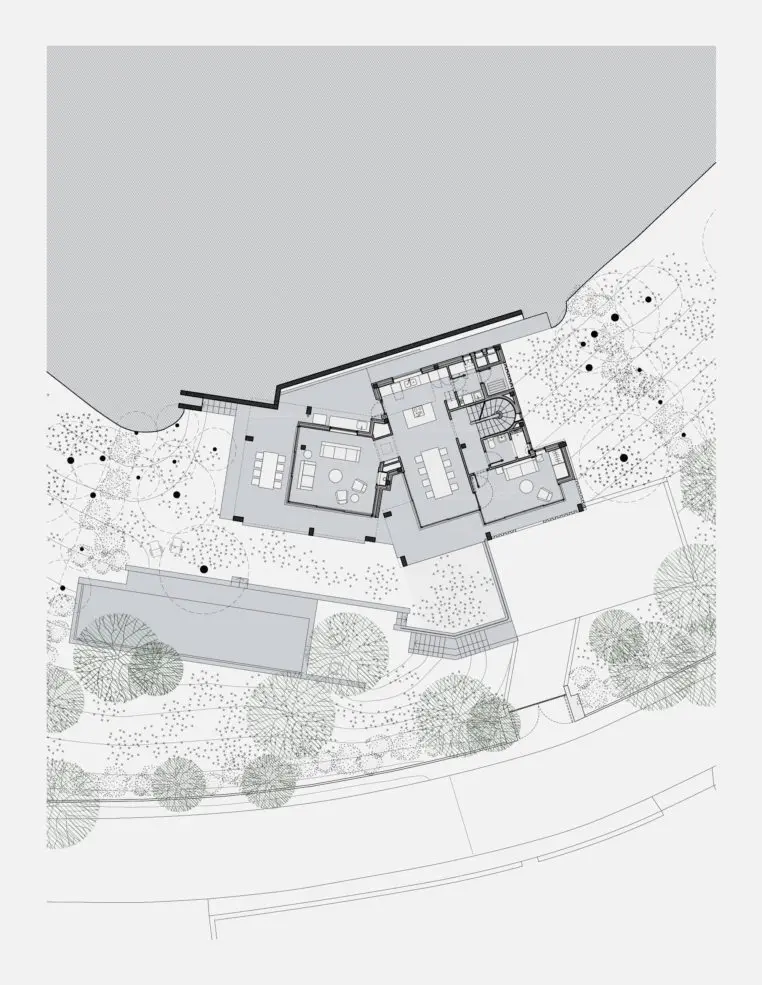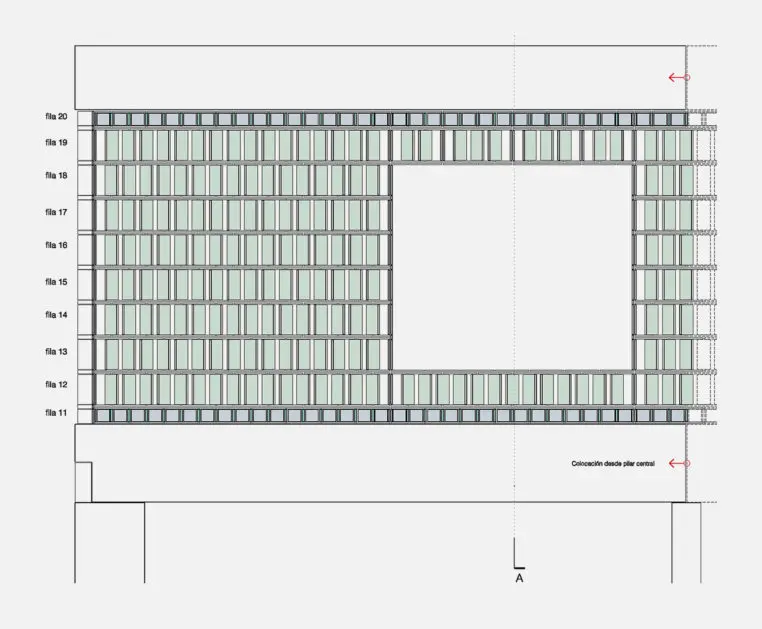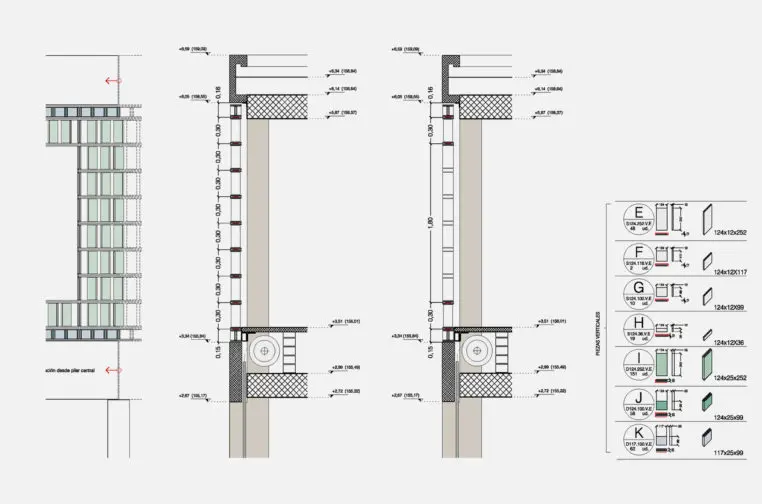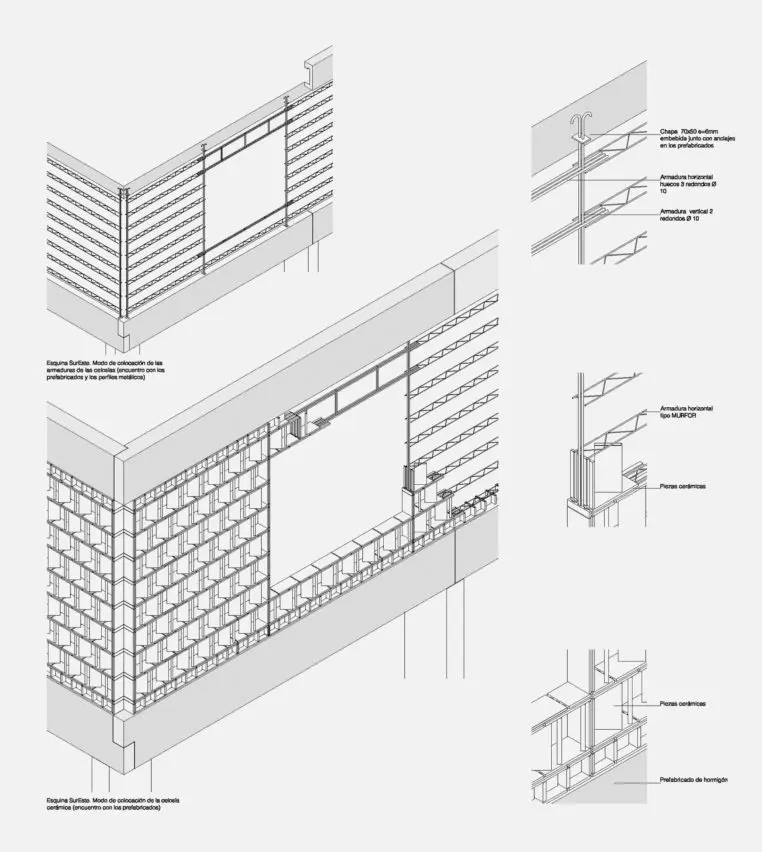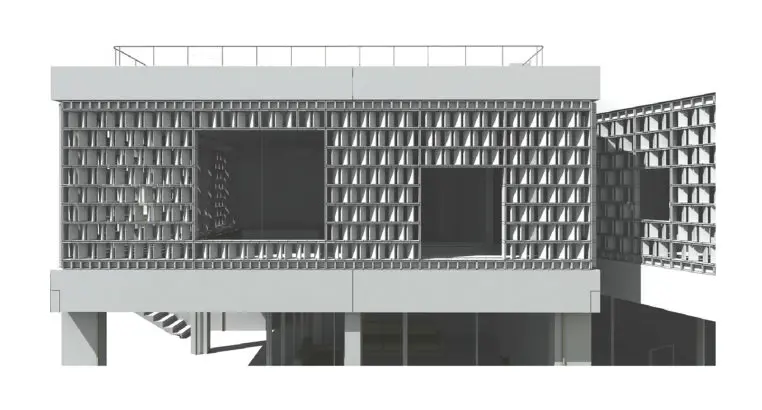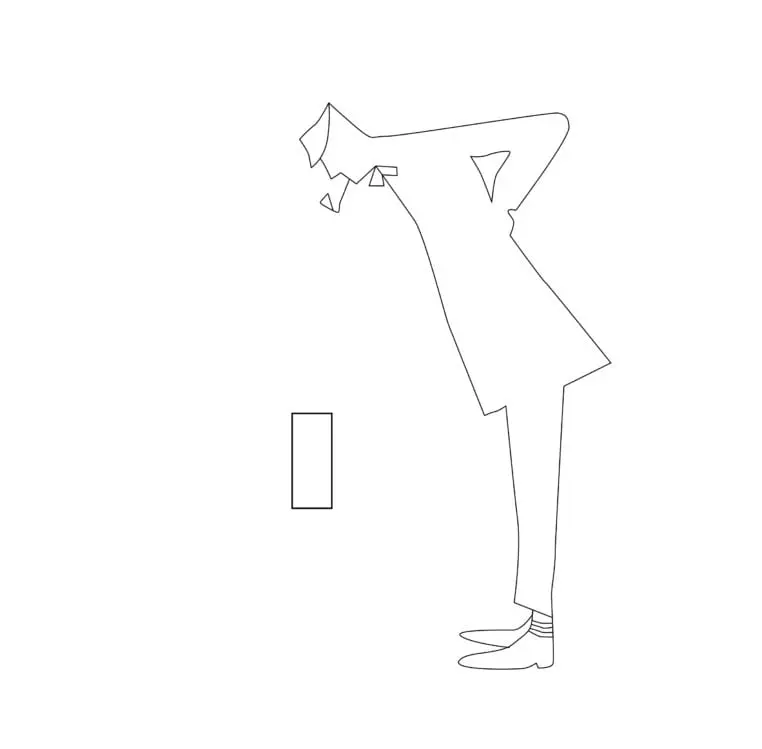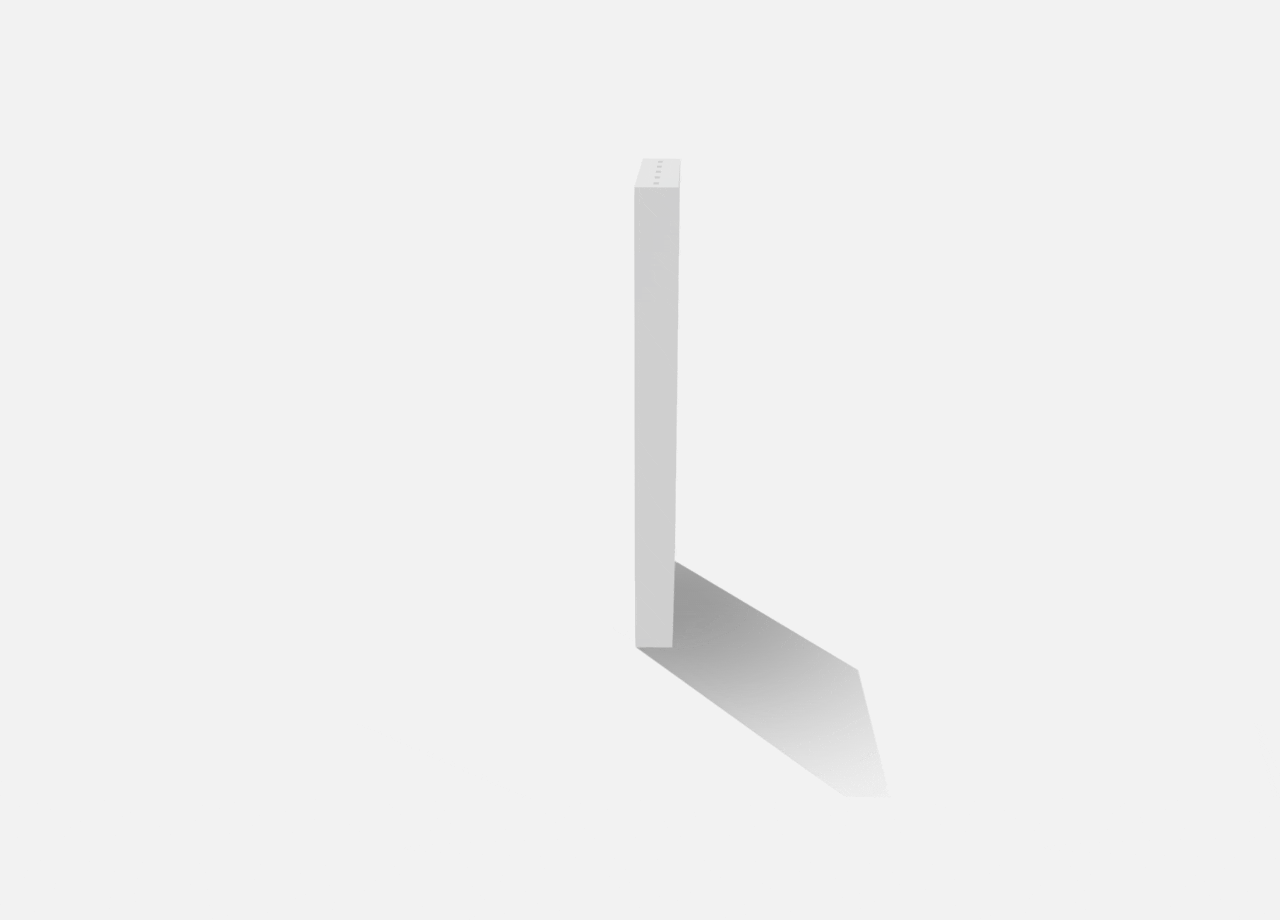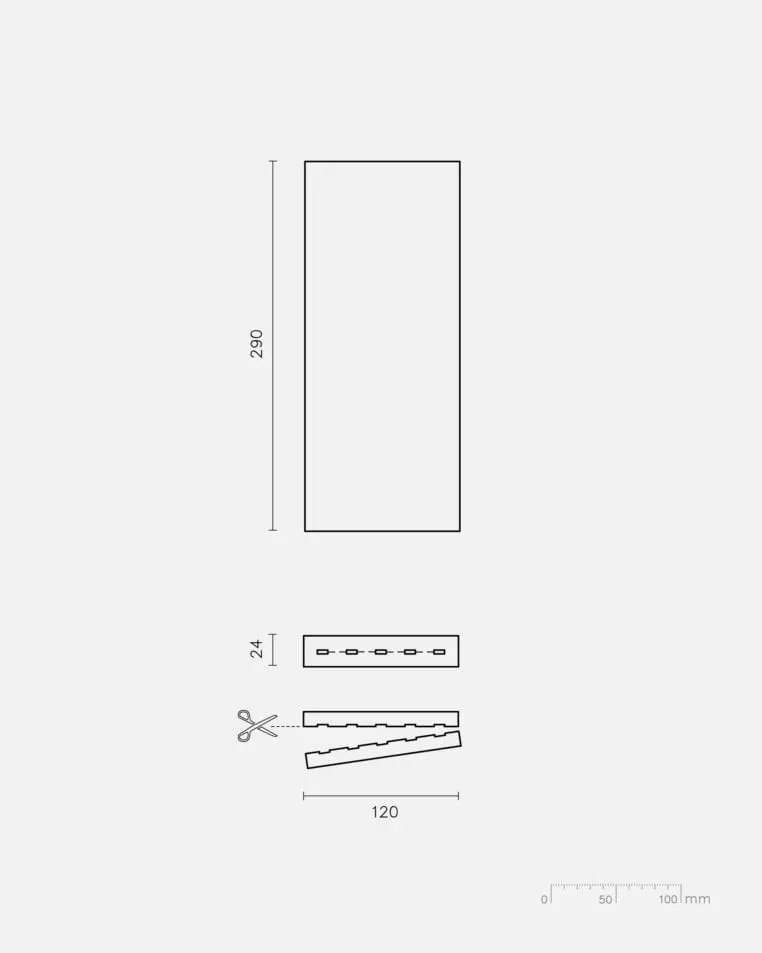The house is located in the upper reaches of the coastal mountain range of Les Gavarres, a short distance from the Sant Sebastià lighthouse, in a little-urbanized area covered in pines, cork trees, and holm oaks. The plot of land is fan-shaped, slopes steeply down towards the sea, and has oblique views of the cove at Llafranc.
The building is divided into two volumes, the aim being to orient the communal living-rooms towards the sea views and to have the building adapt to the form and topography of the site. The volumes are joined together on their northern side, thereby connecting the interior circulations of the house.
In the rooms in direct contact with the terrain the slim glass windows are set far enough back from the façade to avoid the sun coming in summer and to permit it to do so during the remaining seasons. These rooms are diaphanous, light-filled spaces conducive to family life, and their windows can be fully opened to become enormous porches integrated in the flat area of the garden. An airy outdoor kitchen located in the northern part of the house offers continuity to the indoor kitchen and looks out onto the sea through the living-room.
Entirely glazed, the south-facing rooms on the upper floor are shielded from the sun and provide a filter for the views via a delicate glazed lattice of ceramic that is separate from the glass frames.
The lattice, which in interrupted now and then in order to frame the views of the sea and the port in the distance. Two components of prefabricated white concrete provide a frame for the latticework: the upper component crowns the green roof of the building and the lower one conceals rolling shutters that enable the house to be shut up with complete security. The ensemble is delicately poised on the building’s load-bearing structure of sandblasted in situ concrete.
Finally, the house obtained the highest Class A energy rating with an annual energy consumption of 38,42 kWh/m2 and emissions of 6,59 kg of CO2/m2 a year.

